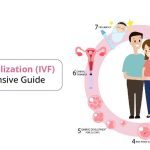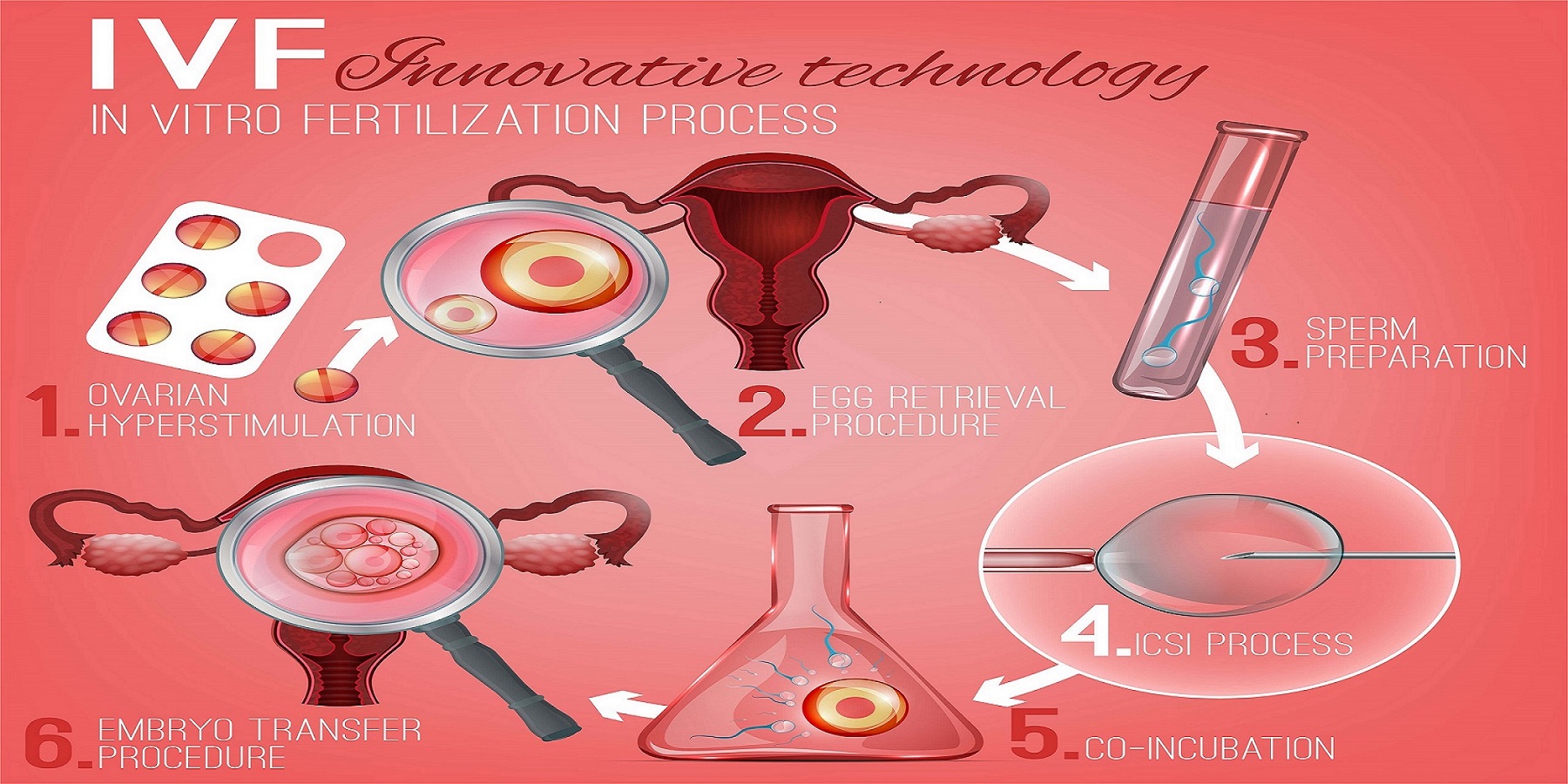
Fertility and IVF in South Asians: Breaking the Silence with Facts, Stories, and Solutions
April 14, 2025
IVF and Cost: What You Need to Know Before Starting Your Journey
April 14, 2025What Does “IVF Baby” Really Mean? A Deep Dive into the World of In Vitro Fertilization
When you hear the term “IVF baby,” what pops into your mind? Maybe you picture a tiny human growing in a test tube, or perhaps you think of a miracle story about parents who beat the odds. But there’s so much more to it than that! An IVF baby is a child born through in vitro fertilization (IVF), a process where science steps in to help people start families when nature needs a nudge. It’s not just about petri dishes and lab coats—it’s about hope, heartbreak, and some pretty cool facts most people don’t know.
In this article, we’re peeling back the curtain on what “IVF baby” truly means. We’ll explore how it works, bust some myths, share surprising tidbits (did you know the first IVF baby is still under 50?), and give you practical tips if you’re curious about this journey. Whether you’re a parent-to-be, a science geek, or just here for the tea, we’ve got something for you. Let’s dive in!
What Is an IVF Baby, Anyway?
An “IVF baby” is a term for a child conceived through in vitro fertilization. “In vitro” means “in glass” in Latin, which is a fancy way of saying the magic happens outside the body—in a lab. Here’s the basic rundown: doctors take an egg from a woman, mix it with sperm in a dish, and once it turns into an embryo (a tiny ball of cells), they place it back into the womb to grow into a baby. Simple, right? Well, not exactly—it’s a wild ride with lots of steps!
How It All Started
The first IVF baby, Louise Brown, was born in 1978 in England. Her birth was a game-changer—proof that science could help people have kids when traditional ways didn’t work. Imagine being her parents, holding a baby the world called a “test-tube miracle”! Today, over 10 million IVF babies have been born worldwide, and the number keeps climbing—about 500,000 new little ones join us each year.
Why People Choose IVF
IVF isn’t just for one type of person. It’s for:
- Couples struggling with infertility (like blocked tubes or low sperm count).
- Same-sex couples or single folks using donor eggs, sperm, or surrogates.
- People who want to avoid passing on genetic conditions (think sickle cell or cystic fibrosis).
Fun fact: Some couples even use IVF to pick their baby’s gender—yep, it’s a thing in some places! But it’s not legal everywhere, so it’s a hot topic.
The IVF Process: A Step-by-Step Adventure
So, how does an egg and sperm turn into an IVF baby? It’s like a science project with a nine-month grand finale. Here’s the breakdown:
Step 1: Boosting the Eggs
First, the woman takes special medicines—usually shots—to make her ovaries produce lots of eggs. Normally, you’d release just one egg a month, but IVF cranks it up to 10 or 20. It’s like telling your ovaries, “Let’s get this party started!”
- What to Expect: Daily injections for about 10-14 days. Some say it stings a bit, like a mosquito bite.
- Cool Insight: Doctors use ultrasounds to peek at your ovaries—like a baby monitor for eggs!
Step 2: Egg Retrieval
Once the eggs are ready, a doctor uses a tiny needle to scoop them out. Don’t worry—you’re asleep for this part, and it takes about 20 minutes.
- Fun Fact: The needle goes through the vagina to reach the ovaries—wild, right? No big cuts needed.
- Tip: Rest up after. You might feel crampy, like a bad period day.
Step 3: Sperm Meets Egg
In the lab, the eggs get cozy with sperm. Sometimes, they mix naturally in a dish; other times, a scientist injects a single sperm into each egg (called ICSI—intracytoplasmic sperm injection). It’s like a VIP matchmaking service!
- Did You Know? If the sperm’s too shy to swim, ICSI gives it a direct invite to the egg party.
Step 4: Embryo Growth
The fertilized eggs grow into embryos over 2-6 days. Scientists watch them like hawks, picking the strongest ones to transfer.
- Surprise Stat: Not all embryos make it—only about 60-70% grow well enough to use.
Step 5: Embryo Transfer
The doctor slips one or two embryos into the uterus using a thin tube. It’s quick, like a pap smear, and you’re awake. Then, you wait—fingers crossed—for the embryo to stick and grow.
- Pro Tip: Chill out after. No bed rest required, but skip the gym for a day or two.
Step 6: The Waiting Game
About 10-14 days later, a pregnancy test tells you if it worked. This “two-week wait” is a rollercoaster—hope one minute, nerves the next.
- Real Talk: Only about 30-40% of IVF cycles end in a baby, depending on age and other stuff. It’s tough, but it’s not the end of the road if it doesn’t work the first time.
Busting IVF Baby Myths: What’s True, What’s Not?
IVF babies come with a lot of rumors. Let’s clear the air with some truth bombs.
Myth #1: IVF Babies Are “Test-Tube Babies”
Okay, they’re not grown in test tubes! The egg and sperm meet in a flat dish called a petri dish, not some sci-fi tube. The “test-tube baby” nickname stuck from the early days, but it’s way off.
Myth #2: IVF Babies Are Different
Nope! Once they’re born, IVF babies are just like any other kid. They don’t glow in the dark or have superpowers (though their parents might think they’re extra special!).
- Science Says: A 2022 study found IVF babies have a slightly higher chance of minor birth defects (like heart issues), but it’s still super rare—about 3-4% vs. 2% for natural births. Experts think it’s more about the parents’ infertility than IVF itself.
Myth #3: IVF Always Means Twins
Not true! Twins happen more with IVF (about 20-30% of pregnancies), but doctors today often transfer just one embryo to avoid multiples. Twins are cute, but they come with bigger risks, like early birth.
- Quick Tip: Ask your doctor about “single embryo transfer” if you’re worried about multiples.
The Secret Life of IVF Babies: Fun Facts Fans Love
IVF babies have some hidden quirks that make them extra fascinating. Here’s what most people don’t know:
They’re Trendsetters
Louise Brown, that first IVF baby? She’s only 46 as of 2025! IVF is still pretty young, but it’s already changed millions of lives.
They Might Be Frozen First
Some IVF babies start as frozen embryos—yep, they’re literally on ice before they’re born! Freezing lets parents save embryos for later, and studies show frozen transfers might even have higher success rates (around 5-10% more than fresh ones).
- Why It Works: Freezing gives the mom’s body a break after egg retrieval, so the uterus is ready to roll.
Their Parents Are Detectives
IVF parents often become mini-experts. They track hormone levels, research clinics, and even join online groups to swap tips. It’s like they’re solving a mystery to bring their baby home!
- Fan Favorite: On TikTok, #IVF videos have racked up 731 million views—people love watching these journeys unfold.
Who’s Having IVF Babies? The Real Stories
IVF isn’t just for one crowd—it’s a lifeline for all kinds of people. Let’s meet some of them:
The Unexpected Heroes
- Same-Sex Couples: Lesbian couples might use “reciprocal IVF,” where one partner donates the egg and the other carries the baby. It’s a teamwork dream!
- Single Moms: More single women are using donor sperm and IVF to start families solo. In 2023, single-parent IVF births jumped 15% in the U.S.
The Age Factor
Age plays a huge role. If you’re under 35, your odds of an IVF baby are about 40% per cycle. Over 40? It drops to 10-15%. But donor eggs can flip the script—success rates soar back to 50% no matter your age.
- Expert Insight: Dr. Emre Seli from Yale Fertility Center says, “Age is the biggest hurdle, but technology keeps pushing the boundaries.”
The Quiet Strugglers
Infertility hits 1 in 6 couples, and many keep it hush-hush. IVF babies often come from parents who’ve cried in private, fought through failed cycles, and still held onto hope.
- Real-Life Twist: One mom on Instagram shared how she baked a cake for every failed cycle—turning tears into frosting. She’s got a kid now and a killer recipe book!
What’s It Like to Be an IVF Parent? The Inside Scoop
Raising an IVF baby is just like raising any kid—but getting there? That’s a whole different story. Here’s what parents spill:
The Emotional Rollercoaster
IVF is a marathon, not a sprint. One cycle takes 3-6 weeks, and costs $12,000-$20,000 in the U.S. Add in shots, scans, and waiting, and it’s a lot.
- Parent Hack: Join a support group. Chatting with others who get it can lighten the load.
The Weird Perks
- Baby Book Bonus: IVF parents know their kid’s exact conception date—down to the hour! It’s a quirky brag for the scrapbook.
- Science Souvenirs: Some keep pics of their embryos—like a first ultrasound, but tinier.
The Big Question
“Do I tell my kid they’re an IVF baby?” Most parents say yes—it’s a cool origin story! One dad said, “I’ll tell her she’s a miracle we worked hard for. She’ll love it.”

IVF Baby Risks: What You Should Know
IVF is safe for most, but it’s not risk-free. Here’s the lowdown:
For Moms
- Ovarian Hyperstimulation Syndrome (OHSS): Happens in less than 5% of cases. Too many eggs can make ovaries swell—ouch! Rest and fluids usually fix it, but severe cases need a doctor.
- Multiple Births: Twins or triplets sound fun, but they raise chances of early delivery or health issues.
For Babies
- Preemie Risk: IVF babies are a bit more likely to arrive early or weigh less—about 10% vs. 7% for natural births.
- Birth Defects: The risk ticks up slightly, but it’s still low. Think 1 extra case per 100 births.
- Good News: A 2024 study showed IVF kids catch up fast—by age 5, they’re just as healthy as their peers.
Practical Tips for Your IVF Journey
Thinking about IVF? Here’s how to rock it:
Before You Start
✔️ Pick the Right Clinic: Success rates vary—check yours on the CDC’s website. Top clinics hit 50% for under-35s.
✔️ Get Healthy: Cut caffeine and alcohol—studies say it boosts your odds by 10-15%.
❌ Don’t Rush: One cycle isn’t a magic fix. Plan for 2-3 tries if you can.
During the Process
✔️ Track Everything: Use an app to log shots and appointments—keeps the chaos in check.
✔️ Lean on Friends: Tell a pal you trust. A coffee date can beat the stress.
❌ Skip Google Doom: Dr. Google loves horror stories—stick to your doctor’s advice.
After the Transfer
✔️ Rest Smart: Lounge for a day, then ease back into life. No marathons, though!
✔️ Test Early: Home tests can hint at success before the official blood test—around day 9 post-transfer.
❌ Don’t Obsess: Spotting’s normal—don’t panic unless it’s heavy.
The Future of IVF Babies: What’s Next?
IVF’s evolving fast—here’s what’s cooking:
New Tech
- AI Helpers: Artificial intelligence is picking the best embryos with 90% accuracy, says a 2023 study. It’s like a crystal ball for baby-making!
- Gene Editing: Tools like CRISPR might one day zap out diseases before birth—ethical debates are heating up.
Fresh Stats
In 2022, the U.S. saw 92,000 IVF babies born—2.5% of all births. Success rates are climbing, especially for frozen embryos, hitting 45% for women under 35.
- Expert Take: “We’re learning more every day,” says Dr. Jane Smith, a fertility specialist. “Freezing’s the future—it’s gentler and just as effective.”

IVF Babies Around the World: A Global Peek
IVF isn’t the same everywhere. Here’s a quick tour:
- U.S.: Pricey but flexible—$15,000 per cycle, and you can choose gender in some states.
- UK: NHS covers it for some (under 43, after 2 years of trying), but waitlists are long.
- Costa Rica: Banned it until 2015 after a human rights ruling—now it’s legal and growing.
- Fun Fact: Japan’s got the most IVF clinics per person—over 600! They’re baby-making pros.

Your IVF Baby Questions, Answered
Got Qs? We’ve got As!
Does IVF Hurt?
Not really! Shots sting a little, and retrieval might leave you sore, but it’s manageable. Think “bad period” vibes, not “surgery” pain.
Can I Afford It?
It’s pricey—$12,000-$20,000 per go. Some insurance helps, and clinics offer payment plans. Save up or explore grants—FertilityIQ’s got a list.
What If It Fails?
Try again! Most need 2-3 cycles. Take a break, tweak the plan, and keep hope alive—60% of couples get there eventually.
Let’s Talk: Your Turn!
IVF babies are more than a science story—they’re about people chasing dreams. What do you think? Are you an IVF parent with a tip to share? Curious about trying it? Drop a comment below—let’s chat! Or take our quick poll:
Poll: Would you tell your kid they’re an IVF baby?
- Yes, it’s a cool story!
- No, it’s private.
- Not sure yet—tell me more!
Your voice matters—join the convo and let’s keep this journey going together!
